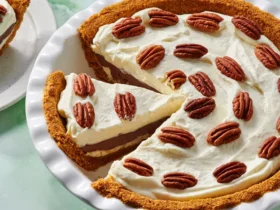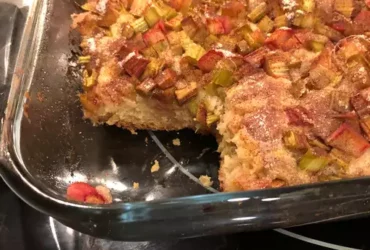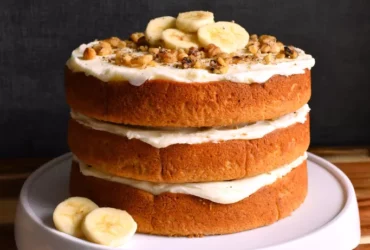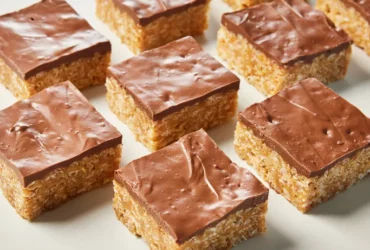Ingredients
Lemon Zest and Juice
The ingredients that make up this delightful treat are crucial to its success. They add flavor, texture, and moisture to create a cookie that will leave you wanting more.
The essential components include:
- All-purpose flour
- Baking powder
- Salt
- Unsalted butter, softened
- White granulated sugar
- Confectioners’ sugar (also known as powdered sugar)
- Large eggs
- Lemon zest and juice
- Vanilla extract
In the case of Lemon Zest:
- Lemon zest is simply the outer, brightly colored skin of a lemon.
- It contains oils that give lemons their characteristic flavor and aroma.
- The most common method for obtaining lemon zest is by using a zester or fine grater to remove the top layer of the lemon peel.
Lemon juice, on the other hand:
- Is extracted from lemons by squeezing them.
- Can be obtained through various methods such as using a manual or electric juicer, or even simply pressing the lemon over a fine-mesh sieve to strain out the seeds and pulp.
Lemon zest adds a delightful burst of citrus flavor and aroma to these cookies, while lemon juice provides moisture and helps to balance out the sweetness of the sugar.
1 cup freshly squeezed lemon juice
The ingredients for this Lemon Crinkle Cookies recipe are crucial to achieving the perfect balance of flavors and textures. Here’s a detailed list:
1 cup freshly squeezed lemon juice
This is the star of the show, providing an intense citrus flavor that will make these cookies truly special. Freshly squeezing the lemon juice ensures that you get the right amount of acidity and flavor.
2 teaspoons grated lemon zest
While the lemon juice is essential for the flavor, the zest adds a subtle layer of citrus depth and aroma to the cookies. Be sure to use fresh lemons for the best results.
1/2 cup unsalted butter, softened
This contributes to the richness and tenderness of the cookies, making them a delight to bite into. Use high-quality butter that’s free from additives or preservatives.
3/4 cup granulated sugar
The sweetness level in this recipe is balanced by the tartness of the lemon juice, but you can adjust it according to your taste preferences.
2 large eggs
These will help bind all the ingredients together and give the cookies their signature texture. Fresh eggs are essential for achieving a tender crumb.
1 teaspoon vanilla extract
This adds a hint of sweetness and depth to the cookies, but feel free to adjust or omit it if you’re not a fan.
2 3/4 cups all-purpose flour
This will provide structure and stability to the cookies, making them firm enough to hold their shape. Use high-quality unbleached flour for the best results.
1 teaspoon baking powder
This leavening agent will help the cookies rise and give them a light texture. Be sure to use fresh baking powder for optimal results.
Confectioners’ sugar
While not explicitly listed in this section, you’ll need it for dusting the cookies before serving. You can also adjust the amount of powdered sugar according to your personal preference.
2 tablespoons grated lemon zest
The inclusion of 2 tablespoons of grated lemon zest in this Lemon Crinkle Cookies recipe serves a multifaceted purpose, significantly contributing to both the flavor and texture profiles of these distinctive treats.
Firstly, when it comes to flavor, the lemon zest provides an instant boost to the overall taste experience. Grated from the outermost layer of the lemon peel, the zest contains oils that are responsible for its characteristic citrusy aroma and flavor. The addition of this zesty element introduces a bright, uplifting quality that complements the richness of sugar and butter, creating a delightful harmony of flavors.
The contribution of lemon zest to the texture of these cookies is also noteworthy. When combined with sugar, lemon zest helps break down the larger sugar crystals, contributing to a more uniform distribution of sweetness throughout the dough. This process, known as ‘sugar syruping,’ facilitates easier mixing and ultimately leads to a cookie that’s both tender on the inside and crispy on the outside – an essential characteristic of these crinkled treats.
Moreover, lemon zest acts as a stabilizer within the dough, enhancing its ability to hold together while still maintaining a delicate texture. This stability is particularly important when working with the high sugar content present in this recipe; by incorporating lemon zest, the cookies will retain their structure and shape during baking, resulting in a product that’s visually appealing as much as it is delicious.
When selecting lemons for grating, it’s crucial to choose ones with thick, firm skin that has not been over-sprayed or treated. This helps ensure that the lemon zest will be both fragrant and free of any bitter notes that might affect the overall taste experience of these cookies. By incorporating 2 tablespoons of grated lemon zest in the right proportion, you’ll add depth to your Lemon Crinkle Cookies without overpowering the other ingredients, creating an authentic balance of flavors and textures.
Flour, Sugar, and Other Dry Ingredients
The key to achieving the perfect texture and flavor in lemon crinkle cookies lies in the quality and ratio of ingredients, particularly the dry ingredients. The main dry ingredients used in this recipe are flour, sugar, baking powder, baking soda, salt, and confectioners’ sugar.
Flour serves as the foundation for structure, providing strength and texture to the cookies. All-purpose flour is the most commonly used type of flour due to its neutral flavor and versatile properties. However, bread flour can be substituted if you want a slightly denser cookie or pastry flour for a lighter texture.
Sugar adds sweetness, tenderness, and moisture to the cookies. Granulated sugar is used in this recipe, but brown sugar or a combination of both white and brown sugar can provide deeper flavors. Keep in mind that using only brown sugar will give your cookies a more caramel-like flavor.
Baking powder is a leavening agent that helps cookies rise, giving them a lighter texture. However, since these cookies are not intended to be light and airy, you can omit the baking powder if you prefer a denser cookie.
Baking soda is another leavening agent used in this recipe, although its role is more subtle than baking powder’s. It helps react with acidic ingredients like lemon juice or buttermilk (not present in this recipe), balancing flavors and producing a tender crumb.
Confectioners’ sugar, also known as powdered sugar, plays several roles in these cookies: it adds sweetness, acts as an anti-caking agent to prevent clumping, and helps achieve that characteristic crinkled appearance. When rolled into small balls, the confectioners’ sugar on the surface melts during baking, creating a beautiful texture.
Salt enhances flavors by suppressing sweetness while highlighting other ingredients like lemon zest or juice. Use a fine salt for the best flavor impact.
2 1/4 cups allpurpose flour
In this recipe for Lemon Crinkle Cookies, a crucial ingredient is all-purpose flour. The quantity specified is 2 1/4 cups.
Characteristics and Uses of All-Purpose Flour
- All-purpose flour is a versatile type of wheat flour that can be used for both sweet and savory baked goods, including cookies, cakes, breads, and pastries.
- It is made from hard red or soft white wheat and has a neutral flavor.
- The protein content in all-purpose flour is relatively high, which makes it suitable for creating dough that can hold its shape and have good structure.
- All-purpose flour is often bleached or unbleached. Bleaching the flour gives it a whiter appearance and can improve the texture of baked goods by making them lighter in color and more tender.
Measuring All-Purpose Flour Accurately
When measuring 2 1/4 cups of all-purpose flour, use a dry measuring cup for accuracy. Sift the flour into the cup if it has become compacted or has lumps.
Role in Lemon Crinkle Cookies
- All-purpose flour serves as the base ingredient for these cookies, providing structure and texture.
- The neutral flavor of all-purpose flour allows the other ingredients to take center stage, particularly the lemon zest and juice that give these cookies their characteristic taste and aroma.
Alternatives and Substitutions
In some recipes, cake flour can be used as a substitute for all-purpose flour in a 1:1 ratio. However, keep in mind that cake flour has less protein than all-purpose flour, which may affect the final texture of your cookies.
Final Notes
Make sure to store any remaining all-purpose flour in an airtight container at room temperature or in the freezer for future baking projects.
1 teaspoon baking powder
Baking powder is a type of leavening agent that is commonly used in baked goods, including cookies such as lemon crinkles.
When it comes to baking powder, the amount used can vary depending on the recipe and the desired outcome. In the case of lemon crinkle cookies, 1 teaspoon of baking powder is often called for.
Baking powder is a mixture of sodium bicarbonate (baking soda) and an acid (such as cream of tartar), along with an anti-caking agent to prevent clumping.
The purpose of baking powder in lemon crinkle cookies is to help the dough rise and give the cookies a light, tender texture. When the dough is mixed and the cookies are baked, the baking powder releases carbon dioxide gas, which gets trapped in the dough and causes it to rise.
This rising action helps to create the characteristic “crinkled” surface of lemon crinkle cookies. The combination of the sugar, butter, eggs, and flour helps to hold the cookies together, while the baking powder provides the leavening power needed to give them their light texture and appealing appearance.
1/2 teaspoon salt
A pinch of salt may seem like an insignificant ingredient, but it plays a crucial role in balancing the flavors of our Lemon Crinkle Cookies. The 1/2 teaspoon of salt called for in this recipe serves several purposes.
First and foremost, salt enhances the overall taste of the cookies by reducing sweetness and emphasizing other flavors. In the case of these lemon crinkles, the salt helps to counterbalance the brightness of the lemon zest and juice without overpowering it.
Salt also has a subtle effect on texture. It can help to strengthen gluten development in flour, leading to a chewier cookie with better structure. This is especially important when working with a high ratio of sugar to flour, as in these cookies.
Furthermore, salt helps to bring out the flavor of other ingredients, particularly spices and herbs. In this recipe, the lemon zest provides a lovely citrus aroma that’s amplified by the presence of salt.
It’s worth noting that using the right type of salt can make a difference in baked goods like these cookies. A fine, flaky sea salt like Maldon or Fleur de Sel is ideal for baking because it dissolves quickly and evenly, distributing its flavor throughout the dough.
In terms of substitution, you can use other types of salt in place of fine sea salt, but keep in mind that they may have a coarser texture and more pronounced flavor. Table salt or kosher salt will work, but reduce the amount used as it tends to be more salty than fine sea salt.
Instructions
Mix Wet and Dry Ingredients
To successfully mix wet and dry ingredients for the Lemon Crinkle Cookies Recipe, it’s essential to follow a clear and logical process. The first step involves preparing both the wet and dry ingredients separately to ensure they are ready for combination.
For the wet ingredients, you’ll need to gather all the liquids such as butter softened, eggs at room temperature, lemon juice, vanilla extract, and sour cream (if using). Make sure these ingredients are in close proximity to prevent spills or messes. You may want to lay a clean towel under your work surface for easy cleanup if anything does happen.
Now, let’s move on to the dry ingredients. These typically consist of flour, baking powder, baking soda, salt, and granulated sugar (if not using powdered sugar). Ensure these are also easily accessible and within arm’s reach. It might be helpful to have a small scale handy if you’re working with precise measurements.
Once you’ve prepared both sets of ingredients, it’s time to mix them together. Start by pouring the wet ingredients into a large mixing bowl and using an electric mixer or a whisk to combine them thoroughly. Be patient and ensure that all lumps are eliminated from this mixture before proceeding.
Next, in a separate bowl, sift your dry ingredients together with a fine-mesh sieve or a sifter. This step is crucial because it removes any lumps in the dry ingredients while aerating them slightly. It’s also an excellent way to mix powdered sugar and granulated sugar evenly if you’re using both.
With your wet and dry ingredients prepared, you can now combine them. Gradually add the sifted dry ingredients to the wet mixture and use a rubber spatula or the electric mixer (with a low speed) to gently fold them together until no dry spots remain. This process is usually straightforward and requires less mixing than creaming butter and sugar in a traditional cookie recipe.
After combining, give your dough a few quick kneads with your hands to distribute ingredients evenly and ensure the right texture for lemon crinkle cookies. If you find that your dough is too sticky or too dry, feel free to add more flour or sour cream as needed.
The final step in preparing the lemon crinkle cookie dough involves chilling it. Wrap your bowl with plastic wrap or place it in a ziplock bag and refrigerate for at least 30 minutes to firm up the butter and make the dough easier to shape into balls. Once chilled, you can proceed with shaping your lemon crinkles according to your preference.
In a large bowl, whisk together the sugar, eggs, lemon juice, and lemon zest.
When it comes to instructions, clarity and precision are crucial. This is particularly true when following a recipe, like the one for Lemon Crinkle Cookies. In this case, the first step in creating these delicious treats involves combining several ingredients in a large bowl.
The process of whisking together sugar, eggs, lemon juice, and lemon zest requires a bit more attention than simply throwing everything into the bowl. Here’s what needs to happen:
- First, ensure that all the ingredients are measured accurately. This means using a digital scale or measuring cups for precision.
- Mix the sugar and eggs together in one go, breaking them down evenly until they’re well-combined. Use an electric mixer or whisk until you get a smooth consistency.
- Next, add the lemon juice to the mixture and continue whisking. This will ensure that the lemon flavor is evenly distributed throughout the dough.
- Now it’s time for the lemon zest. Finely grate the lemon skin using a zester or fine grater, and then mix it into the bowl with the other ingredients. Be sure to use only the yellow outer layer of the skin, as the white pith can be bitter.
- Continue whisking until all the ingredients are fully incorporated and the mixture is smooth and even. This may take a few minutes, depending on how well you’ve mixed it.
It’s worth noting that using room temperature eggs will help to create a smoother texture in your cookies. If you’re using cold eggs, try letting them sit at room temperature for about 30 minutes before starting the recipe.
Once all the ingredients are well-combined and the mixture is smooth, it’s ready to use as the base for your Lemon Crinkle Cookies. From here, you can follow the rest of the instructions in the recipe, including adding any additional flavorings or toppings that you like.
In another bowl, whisk together the flour, baking powder, and salt.
Instructions for making delicious lemon crinkle cookies involve several steps that require attention to detail and adherence to a specific order.
To begin, preheat your oven to the correct temperature, which in this case is 375°F (190°C). This step sets the stage for the entire baking process and ensures that your cookies turn out evenly baked.
Next, focus on the dry ingredients by whisking together the flour, baking powder, and salt in a separate bowl. This mixture forms the foundation of your cookie dough and is crucial for achieving the right texture.
In another bowl, whisk together the flour, baking powder, and salt.
Now, it’s time to combine the wet ingredients, including the butter, sugar, eggs, grated lemon zest, and freshly squeezed lemon juice. This mixture should be smooth and well combined, taking care not to overmix the batter.
Once you’ve prepared both mixtures, it’s time to combine them, adding in any additional ingredients as specified in the recipe. The goal is to create a uniform dough that’s easy to work with.
The final step involves scooping out balls of dough onto a baking sheet lined with parchment paper, leaving enough space between each cookie for proper spreading during baking.
Additional Tips and Variations
Baking and Cooling
Baking and cooling are crucial steps in creating perfect lemon crinkle cookies. Here are some additional tips and variations to help you achieve success:
Baking Tips
- Use room temperature ingredients, as this will ensure that the butter and eggs mix evenly and the sugar dissolves properly.
- Bake one sheet at a time to prevent overcrowding and promote even cooking. If necessary, bake in batches to maintain adequate space between each cookie.
- Rotate the baking sheets halfway through the baking time to ensure that the cookies cook uniformly and avoid hotspots.
Cooling Tips
- Allow the cookies to cool on the baking sheet for 5 minutes before transferring them to a wire rack. This will help them set and prevent breakage.
- Don’t overcrowd the wire rack, as this can cause the cookies to stick together or become misshapen.
Additional Tips
- To enhance the lemon flavor, zest the lemons and mix the grated zest into the dough before baking.
- For an added texture, fold in some chopped nuts or sprinkles before scooping the dough onto the baking sheet.
Variations
- Try substituting the lemon juice with orange or lime juice to create different flavor profiles.
- To make the cookies more festive, add a few drops of food coloring to tint them in various shades of yellow or pink.
Baking and Cooling Times
- Baking Time:8-10 minutes per sheet at 375°F (190°C)
- Cooling Time:About 30 minutes to an hour, or until the cookies are completely cool and set
Yield: This recipe makes approximately 12-15 lemon crinkle cookies per sheet.
Bake for 1215 minutes or until the edges are set and the centers are slightly soft.
To achieve the perfect texture and appearance for your Lemon Crinkle Cookies, consider the following additional tips and variations:
Temperature Control
If you want a chewier center or a crisper edge, adjust the baking temperature accordingly.
Leavening Agents
You can try adding 1/2 teaspoon of baking soda to enhance the lemon flavor and texture. However, be cautious not to add too much, as it may affect the overall taste and spread of the cookies.
Lemon Zest Intensification
- Add an extra tablespoon or two of lemon zest to amplify the citrus flavor in your cookies.
- Use a higher ratio of lemon zest to sugar for a more intense lemon taste experience.
Additional Mix-ins
- Add chopped nuts (walnuts or almonds work well) to provide texture and depth to your cookies.
- Incorporate dried cranberries or cherries for a fruity twist on the classic lemon crinkle cookie.
Coating Techniques
- To achieve a more uniform crinkled surface, use a small amount of powdered sugar to coat each cookie immediately after removing them from the oven. This will help the cookies retain their shape and texture.
Baking Time Variations
- For chewier cookies, bake for 10-15 minutes or until lightly golden brown around the edges.
- For crisper cookies, increase baking time by an additional 5-10 minutes or until they reach a darker golden brown color.
Center Softness Adjustment
- To achieve a slightly soft center, bake the cookies for 12-15 minutes or until the edges are set and the centers are still slightly tender.
Let cool on the baking sheet for 5 minutes before transferring to a wire rack.
To ensure that your lemon crinkle cookies retain their delicate texture and flavorful taste, it’s essential to follow some additional tips and variations.
One crucial step in making these cookies is to let them cool on a baking sheet for 5 minutes before transferring them to a wire rack. This allows the cookies to set and retain their shape, preventing them from spreading or becoming misshapen during cooling.
Another key tip is to not overbake your lemon crinkle cookies. The edges should be lightly golden brown, while the centers remain soft and slightly puffy. Overbaking can result in cookies that are dry and lacking in flavor.
For an added burst of citrus flavor, you can garnish your lemon crinkle cookies with a sprinkle of powdered sugar or a few dried lemon zest strips. This not only adds visual appeal but also intensifies the lemon flavor.
If you’re feeling adventurous, you can experiment with different types of citrus fruits to create unique flavor variations. Try substituting the lemon juice with orange or lime juice for a distinct twist on this classic cookie recipe.
Another variation is to add some texture to your cookies by incorporating chopped nuts or dried fruit into the dough. Chopped almonds or hazelnuts pair particularly well with lemon, adding a satisfying crunch to each bite.
To make these cookies even more festive, you can shape them into balls before baking, then flatten them slightly after they’ve cooled. This creates a fun and playful texture that’s perfect for holiday gatherings.
- Best Datanyze Alternatives for 2025 - April 24, 2025
- Best Hunter.io Alternatives for 2025 - April 22, 2025
- Best Lead411 Alternatives for 2025 - April 22, 2025















